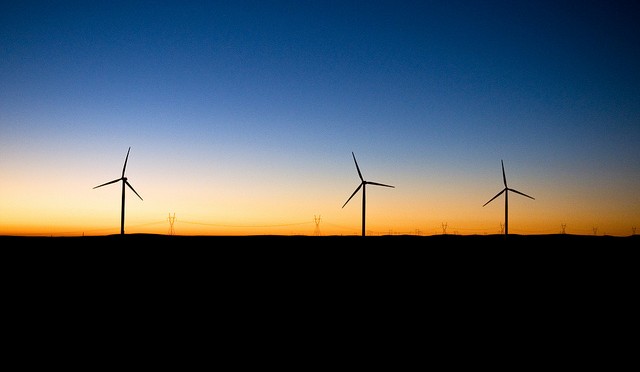General Motors will buy all of the clean energy generated by the Northwest Ohio Wind project, a 100 megawatt (MW) project owned by Starwood Energy Group that located across about 12,750 acres of land in Van Wert and Paulding Counties. The project is scheduled to be completed in 2018.
Based on standard EPA calculations and references, the Northwest Ohio Wind project will power over 30,000 homes, avoid the CO2 emissions of over 34,000 homes, or equivalently avoid the CO2 emissions of over 48,000 passenger vehicles.
“Fortune 100 companies such as General Motors have become a key force supporting renewable energy,” said Himanshu Saxena, Senior Managing Director and Co-Head of Starwood Energy Group. “We are pleased to enter into this partnership with General Motors to help meet their sustainability objectives.”
“Starwood’s Northwest Ohio Wind project is helping us toward our goal of meeting the electricity needs of our global operations with 100 percent renewable energy,” said Rob Threlkeld, GM global manager of renewable energy. “The wind farm is ideally located to help meet the electricity needs of our Ohio manufacturing facilities.”
All of GM’s Ohio and Indiana manufacturing facilities – including those that build the Chevrolet Cruze and Silverado and GMC Sierra light-duty pickup trucks – will meet their electricity needs through 100 percent renewable energy. GM is buying a total of 200 megawatts of wind energy from Ohio and Illinois wind farms. Once the turbines come online by the end of 2018, renewable energy will power 20 percent of GM’s global electricity use.
“Congratulations to GM on this huge progress leap – a fantastic show of commitment at Climate Week NYC, and all achieved in just a year since the company joined RE100,” said
Helen Clarkson, CEO, The Climate Group. “GM vocally champions the compelling business case for renewables and shares learnings with other companies. It shows other companies what’s possible.”
The new wind deals are enough to meet the electricity needs of Fort Wayne Assembly, Marion Metal Center and Bedford Casting plants in Indiana and Lordstown Assembly, Defiance Casting Operations, Parma Metal Center and Toledo Transmission plants in Ohio.
“Technology is driving solutions for mobility and safety in our vehicles, as well as the new energy solutions that build them,” said Gerald Johnson, GMNA vice president of Manufacturing and Labor. “This is the way we do business: offering vehicles that serve our customers’ lifestyle needs while providing sustainable solutions that improve our communities.”
GM is leveraging energy efficiency and a mix of onsite and offsite renewable energy solutions to reach its 100 percent renewable energy goal. The company’s four-part strategy acknowledges how its energy and product strategies intersect. As GM works toward advancing zero emissions vehicles, it makes business sense to create a cleaner grid on which to drive them. The company uses EV batteries in tandem with a solar array to power an office building at its Milford Proving Ground in Michigan and is researching the use of fuel cells as energy storage in the future.
“We’re helping provide solutions to green the grid through these new renewable energy deals and sharing best practices with other companies so they too can reduce risk and energy costs,” said Rob Threlkeld, GM global manager of renewable energy. “With a pragmatic strategy, companies can turn ambitious renewable energy goals into action and scale quickly.”
Altenex, an Edison Energy Company and independent renewable energy advisor, supported GM in the negotiation of the power purchase contracts.
GM will be the sole user of the Northwest Ohio Wind farm, a 100 MW project owned by Starwood Energy Group. Swift Current Energy will provide 100 MW from its HillTopper Wind Project in Logan County, Illinois.
GM has used renewable energy for decades, saving about $5 million annually as a result. Renewable energy use supports a resilient grid while offering more stable energy pricing. GM made its first wind purchase in 2014 for several of its Mexico operations, followed by deals supporting Texas wind farms for 30 and 50 megawatts of energy. The company uses solar power at 26 facilities and generates electricity from landfill gas at two assembly plants.


